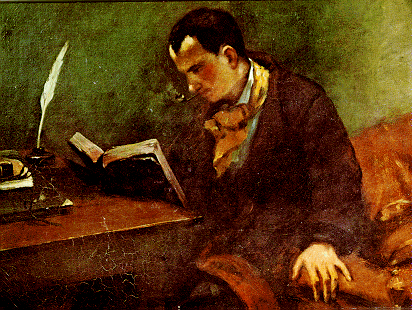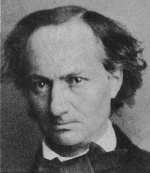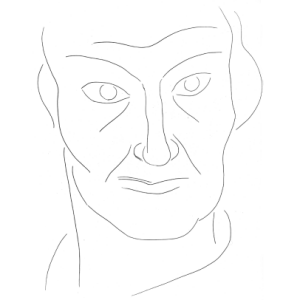
Charles Baudelaire, the great French poet of the mid nineteenth century whose powerful writing ushered in a era of symbolism, is one of the most important poets of the nineteenth century.
Not only a poet of stunning imagery and extraordinary musicality, he was also one of the first to herald that new consciousness — urban, pushing at the edges of things, uncertain of itself — which we, today, still recognize as our own modern way of being.
 Baudelaire’s life was almost as important as his poetry. His rejection of bourgeois values, his use of drugs, his fascination with sex, his close friendships with painters and other poets: all of these made him a sort of model for the poet as a ‘bohemian’ figure. He is the archetype of the poet as someone who lives his own life on the fringes of society, rebellious in life style, dedicated to moving so far beyond the middle class that his work shocks them so deeply that their either cry out, ‘But is it art?’ or attempt to censor it as blasphemous, evil, pornographic.
Baudelaire’s life was almost as important as his poetry. His rejection of bourgeois values, his use of drugs, his fascination with sex, his close friendships with painters and other poets: all of these made him a sort of model for the poet as a ‘bohemian’ figure. He is the archetype of the poet as someone who lives his own life on the fringes of society, rebellious in life style, dedicated to moving so far beyond the middle class that his work shocks them so deeply that their either cry out, ‘But is it art?’ or attempt to censor it as blasphemous, evil, pornographic.
Charles Baudelaire stunned and shocked France when he published his Les Fleurs du Mal (“Flowers of Evil”) in 1855. In many ways, the image we have of the modern artist — a bohemian, living an economically tenuous existence, exploring what the French call the ‘demi-monde’ (a world of alcohol, drugs, sexual experimentation), pushing at not only the boundaries of art but the boundaries of public taste, shocking those who encounter his work — was created from the material of Baudelaire’s life. But it is primarily for his poetry, not his life, that he is celebrated: first encounter the modern city in Baudelaire’s poetry, and the obsessions of modern life (despair, excess, boredom, the search for meaning) shape his poetic concerns.
A wonderful evocative response to Baudelaire is Henri Matisse’s drawing:
Henri Matisse – portrait de Baudelaire
Etching from the “Poésies de Stéphane Mallarmé,” Editions Skira, 1932.
Image from”Henri Matisse roman” par Aragon, aux Editions Gallimard (1971)


